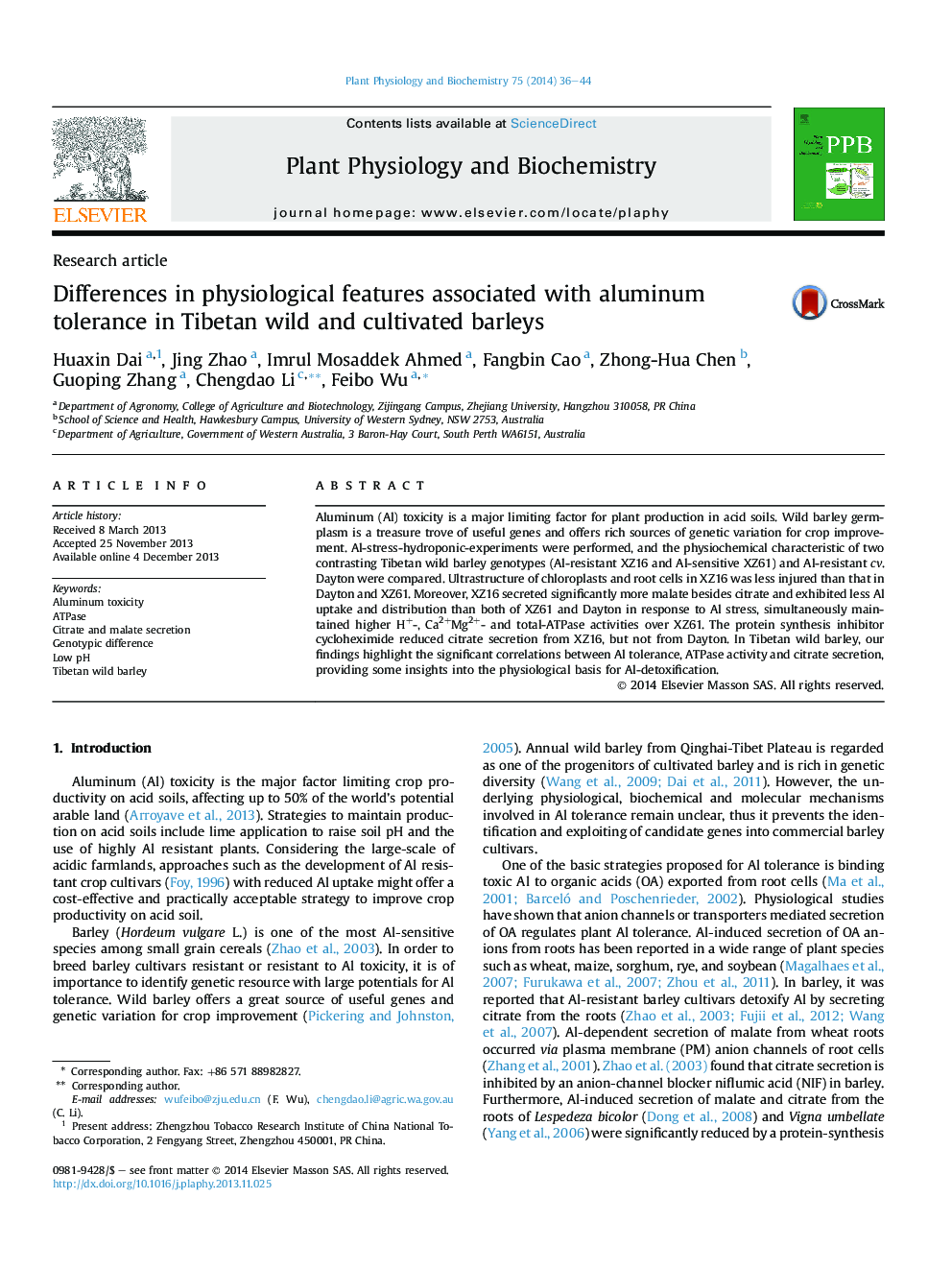| Article ID | Journal | Published Year | Pages | File Type |
|---|---|---|---|---|
| 2015825 | Plant Physiology and Biochemistry | 2014 | 9 Pages |
Abstract
Aluminum (Al) toxicity is a major limiting factor for plant production in acid soils. Wild barley germplasm is a treasure trove of useful genes and offers rich sources of genetic variation for crop improvement. Al-stress-hydroponic-experiments were performed, and the physiochemical characteristic of two contrasting Tibetan wild barley genotypes (Al-resistant XZ16 and Al-sensitive XZ61) and Al-resistant cv. Dayton were compared. Ultrastructure of chloroplasts and root cells in XZ16 was less injured than that in Dayton and XZ61. Moreover, XZ16 secreted significantly more malate besides citrate and exhibited less Al uptake and distribution than both of XZ61 and Dayton in response to Al stress, simultaneously maintained higher H+-, Ca2+Mg2+- and total-ATPase activities over XZ61. The protein synthesis inhibitor cycloheximide reduced citrate secretion from XZ16, but not from Dayton. In Tibetan wild barley, our findings highlight the significant correlations between Al tolerance, ATPase activity and citrate secretion, providing some insights into the physiological basis for Al-detoxification.
Related Topics
Life Sciences
Agricultural and Biological Sciences
Plant Science
Authors
Huaxin Dai, Jing Zhao, Imrul Mosaddek Ahmed, Fangbin Cao, Zhong-Hua Chen, Guoping Zhang, Chengdao Li, Feibo Wu,
